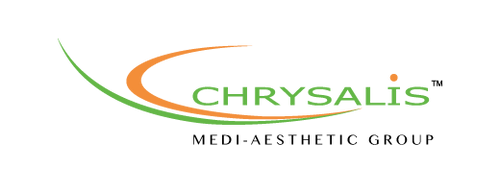
Introduction
A head massage is a deeply relaxing and therapeutic practice that helps relieve stress, tension, and fatigue. Whether performed with hands or tools like scalp massagers, this massage technique stimulates circulation, soothes the nervous system, and promotes overall well-being.
Head massages are often used for:
✅ Stress and anxiety relief
✅ Improving blood circulation
✅ Reducing headaches and migraines
✅ Strengthening hair follicles
✅ Promoting better sleep
If you’re looking for a natural way to relax and rejuvenate, head massage is a simple yet effective solution.
What is a Head Massage?
A head massage involves gentle kneading, rubbing, tapping, and pressure techniques applied to the scalp, forehead, and neck. It is often combined with essential oils to enhance relaxation and improve hair health.
There are different types of head massage, including:
✔ Indian Head Massage – A traditional Ayurvedic technique focusing on the scalp, neck, and shoulders to balance energy and relieve stress.
✔ Scalp Massage – A targeted massage using fingertips or massage tools to stimulate hair growth and improve circulation.
✔ Oil Massage – Warm herbal oils (like coconut or argan oil) are massaged into the scalp to nourish hair and calm the mind.
✔ Acupressure Head Massage – Pressure is applied to specific points on the scalp and temples to relieve tension and promote relaxation.

Benefits of Head Massage
1. Relieves Stress and Anxiety
A head massage stimulates the production of endorphins and serotonin, which promote relaxation and reduce stress levels.
2. Improves Blood Circulation
Massaging the scalp increases blood flow to the brain, delivering more oxygen and nutrients to enhance focus and mental clarity.
3. Reduces Headaches and Migraines
Regular head massages can help reduce tension headaches and migraines by relaxing tight muscles and improving circulation.
4. Strengthens Hair and Encourages Growth
Scalp massage stimulates hair follicles, which can lead to stronger, healthier hair growth. Using oils like coconut or castor oil can further nourish the scalp.
5. Promotes Better Sleep
A relaxing head massage before bedtime helps calm the nervous system, making it easier to fall asleep and improve sleep quality.
6. Eases Neck and Shoulder Tension
Tension in the neck and shoulders often contributes to headaches and discomfort. A head massage includes light pressure on the neck and shoulders to release built-up stress.
How to Perform a Head Massage
You can either visit a professional therapist or do a self-massage at home. Here’s a simple step-by-step guide:
Step 1: Prepare Your Space
Choose a quiet, comfortable place.
Use essential oils (optional) like lavender or peppermint for relaxation.
Step 2: Start with Gentle Strokes
Use your fingertips to gently rub the scalp in circular motions.
Apply light pressure at the temples and base of the skull.
Step 3: Use Kneading and Tapping Movements
Press your fingertips firmly into the scalp and make small kneading movements.
Use a gentle tapping motion to stimulate blood flow.
Step 4: Focus on the Neck and Shoulders
Massage the neck and shoulder muscles with your fingertips to release tension.
Step 5: Finish with Relaxation Techniques
Run your fingers through your hair gently.
Take a deep breath and relax.
Head Massage Aftercare: What to Do Post-Massage
After a head massage, following these aftercare tips will enhance the benefits:
1. Drink Water
Massage stimulates circulation and toxin release, so hydration is essential to help flush out toxins.
2. Avoid Stressful Activities
Give yourself time to relax after the massage to let your body fully absorb the calming effects.
3. Let Oils Absorb (If Used)
If you used oils, leave them on your scalp for at least 30 minutes before washing to allow deep nourishment.
4. Avoid Immediate Sun Exposure
Your scalp may be more sensitive after a massage, so avoid direct sunlight or excessive heat.
5. Get Enough Rest
A head massage promotes relaxation—take a short nap or rest to maximize its calming effects.
Conclusion: Why You Should Try a Head Massage
A head massage is more than just a relaxing experience—it has numerous mental, emotional, and physical benefits. Whether you want to reduce stress, improve hair health, or enhance circulation, incorporating head massages into your routine can make a noticeable difference in your overall well-being.
Try scheduling a professional head massage or practice self-massage at home to enjoy its amazing benefits!
FAQs About Head Massage
1. How Often Should I Get a Head Massage?
For stress relief – 2-3 times per week
For hair growth – At least once a week
For headaches – As needed, depending on tension levels
2. Can Head Massage Help with Hair Growth?
Yes! Scalp massage stimulates hair follicles and improves blood circulation, encouraging hair growth. Using oils like coconut or castor oil can further nourish the scalp.
3. Can a Head Massage Relieve Migraines?
Yes! A head massage can reduce tension in the temples and neck, helping to alleviate migraines and headaches.
4. What Oils are Best for Head Massage?
Coconut Oil – Nourishes and strengthens hair
Lavender Oil – Promotes relaxation and better sleep
Peppermint Oil – Relieves headaches and improves circulation
Argan Oil – Moisturizes the scalp and enhances hair shine
5. Can I Do a Head Massage on Myself?
Yes! A self-massage with fingertips or a scalp massager can be highly effective in reducing stress and improving scalp health.

